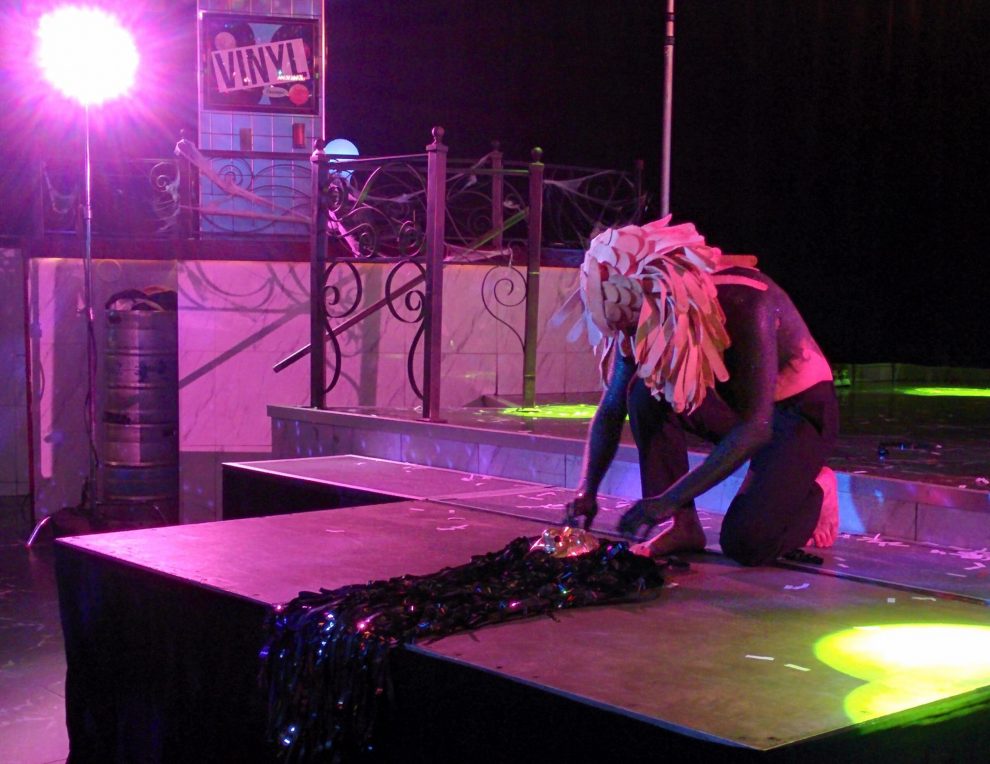ART
Wearable art brings AIDS awareness
Show a place for people to experiment with the body

caption
Woochang Kim presenting his final piece.
caption
Drag queen Deva Station was joined by the Unleashed Dancers to perform a routine.Not many fundraisers open with a drag queen doing full choreography to Meghan Trainor’s Me Too, but in the world of art and fashion, it’s just another evening.
On Friday, Pacifico, the downtown Halifax night club, donated its space to stage NSCAD University’s 26th Annual Wearable Art and Performance Night, with all proceeds going to the AIDS Coalition of Nova Scotia.
“Participants of the Wearable Art and Performance Night are a collection of people who produce more unconventional art that has performance art components, as well as garment making at the core of their practice,” says organizer and fourth-year NSCAD student Gabriel Soligo.
“This isn’t simply a fashion show, moreover, it’s really a place for people to experiment with the body primarily as a vessel for meaning making in art.”
Normally held in the spring, the show was moved to October this year so it would not conflict with other NSCAD fashion shows.
The fundraiser included many forms of experimental body art, including belly dancing, lip syncing and fashion.
“I’m a scavenger and kind of spontaneous maker,” says Woochang Kim, a fifth-year interdisciplinary NSCAD student who chose to showcase his wearable art.

caption
Woochang Kim presenting his final piece.His materials are found, not purchased. “I play with it until I get an idea of what I’m going to do with it, and then I kind of go from there.”
With eight designers presenting more than 20 distinct pieces, the stage and surrounding area was full of excited on-lookers hoping to take photos of the art.
Despite the event being colourful and fun, Elena Fodor, a representative from the AIDS Coalition, keeps in mind that the show is also a fundraiser.
The event continues “a long history of art, poetry, creativity, talent displays that speak to overcoming adversity,” Fodor told the crowd.
The Wearable Art and Performance Show has been teaming up with the AIDS Coalition since 1991.
Proceeds from entry tickets, raffles and $2 from each double cocktail went to the charity, with all those involved volunteering.
“The AIDS epidemic is not over,” says Soligo.
“The primary people who are at a disposition for this disease are women and Indigenous people in Canada. So the disease is this very prevalent in Canadian society and still, by in large, very stigmatized.”

